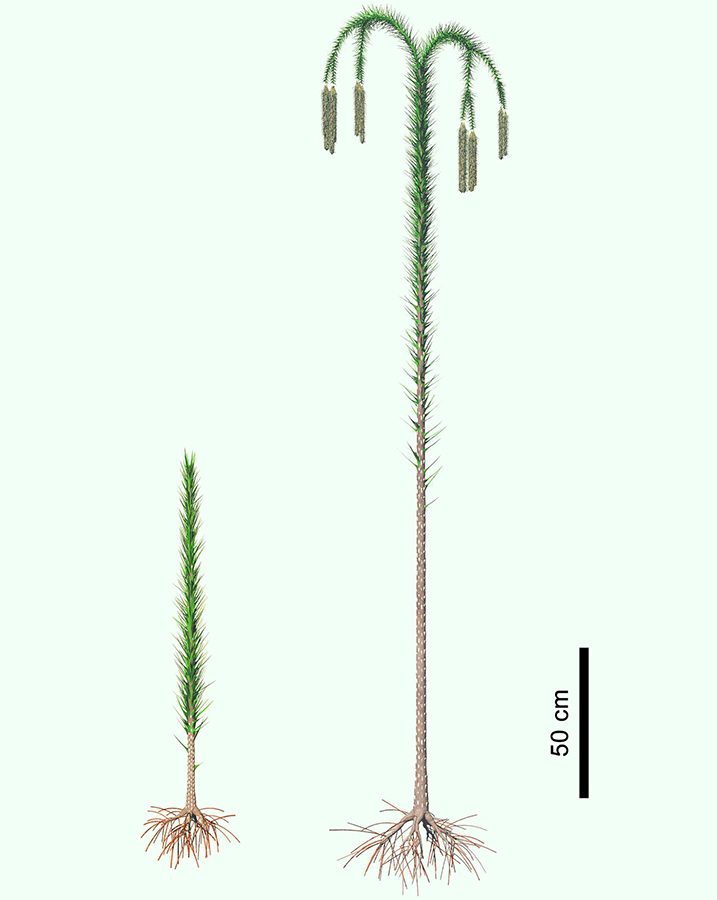Devonian Fossil Forest Unearthed in China

Paleontologists have discovered a 360-million-year-old (Devonian Period) fossilized forest of lycopsid trees near Xinhang in China’s Anhui province — the oldest known fossil forest in Asia.
The Xinhang forest covered an area of at least 62 acres (250,000 m2) and grew in a coastal environment prone to flooding.
Lycopsid trees found in the forest resembled palm trees, with branchless trunks and leafy crowns.
Named Guangdedendron, they had no flowers and no seeds, but shed megaspores.
These trees were normally less than 10.5 feet (3.2 m) tall, but the tallest was estimated at 25.3 feet (7.7 m), taller than the average giraffe.

“The large density as well as the small size of the trees could make the Xinhang forest very similar to a sugarcane field, although the plants in the forest are distributed in patches,” said Professor Deming Wang, a researcher in the School of Earth and Space Sciences at Peking University.
“It might also be that the Xinhang lycopsid forest was much like the mangroves along the coast, since they occur in a similar environment and play comparable ecologic roles.”
Several other Devonian fossil forests have been found: in the United States and in Norway.

“The fossilized Guangdedendron trees are visible in the walls of the Jianchuan and Yongchuan clay quarries, below and above a 13-foot (4 m) thick sandstone bed,” the paleontologists said.
“Some fossils included pinecone-like structures with megaspores, and the diameters of fossilized trunks were used to estimate the trees’ heights.”
“It was difficult to mark and count all the trees without missing anything.”
The team’s paper was published in the journal Current Biology.
_____
Deming Wang et al. The Most Extensive Devonian Fossil Forest with Small Lycopsid Trees Bearing the Earliest Stigmarian Roots. Current Biology, published online August 8, 2019; doi: 10.1016/j.cub.2019.06.053
Source: www.sci-news.com








